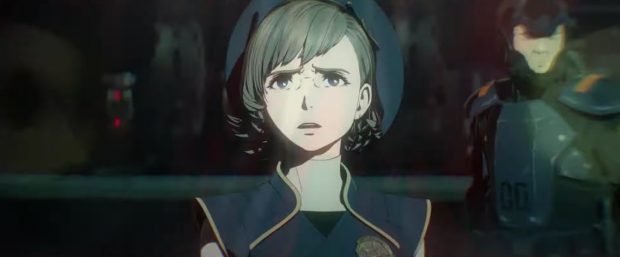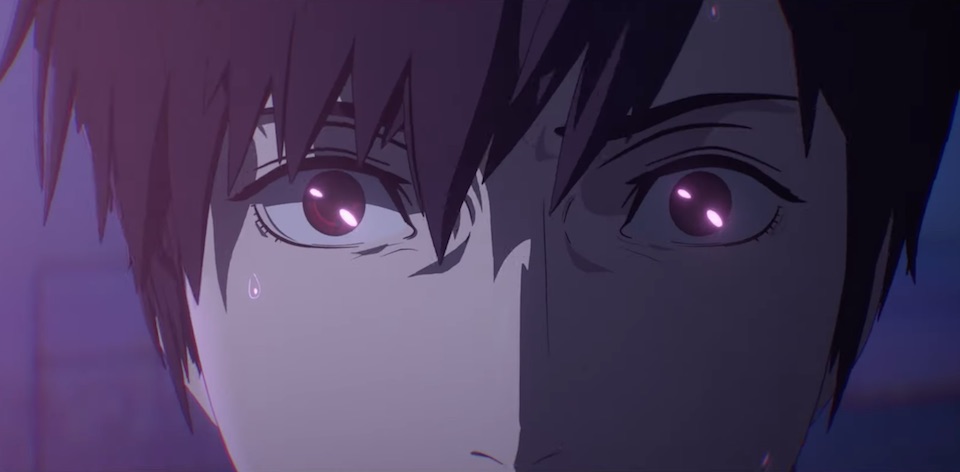Osamu Dazai’s novel Ningen Shikkaku, commonly translated as No Longer Human, has largely been interpreted as being about the impact of Western influences on Japanese traditions. Yet as the second best-selling novel in Japan (after Kokoro), what resonates most with people is its personal narrative of a creator clearly dealing with various forms of depression and alcoholism.
HUMAN LOST (人間失格) seems completely removed from that world, but it is actually one of the more curious adaptations of the 1958 work to date. Set in 2036 (Showa Year 111), human life has been extended using nanotechnology and the S.H.E.L.L. system: Sound Health and Everlasting Long Life. While this is usually reserved for the rich, when depressed artist Yozo Oba (Mamoru Miyano) joins his drag racing friend and penetrates the elite’s inner sanctum, he discovers he has been imbued with terrific powers.
It’s interesting seeing Dazai’s novel filtered through the lens of sci-fi, especially given it has already been filmed in live action, as an anime series, several manga series and was a major influence on the anime Bungou Stray Dogs. The title of the original book more accurately translates as “Disqualified from Being Human,” and this is the thread that director Fuminori Kizaki and writer Tow Ubukata take to its extreme in a cyberpunk reimagining. The notion of the “Lost” in this film are malformed humans who quite literally drop off the grid.

While the surface sheen seems to be a mix of Akira and Ghost in the Shell, and it’s certainly hard to escape those influences in this medium, Kizaki and Ubukata have also maintained Dazai’s narrative structure. Separated into “Notebooks” like Dazai’s book, the contents of which were originally “found” by the publisher and reader, it doesn’t really serve the same purpose here. The romantic elements with agent Yoshiko Hiiragi (Kana Hanazawa) mirror the tragedy of the double-suicide attempt in the novel.
Separating this from every other version is some gorgeous animation. The futuristic vistas of Tokyo immerse us in a world both familiar and unseen, but it really cuts loose during the more metaphysical moments when Yūsuke Kozaki’s elegant character designs are literally turned inside out. As the film builds to a crescendo, where giant monsters roam and there’s a literal clash of inner demons.
With some complex techno-babble and several overlapping sidebar quests, the film doesn’t have all the connective tissue needed to take it to the next level. Still, this is a thoughtful anime thanks to the references to the source material, and it will be interesting to compare this with the straight adaptation from Mika Ninagawa (Diner) – and starring superstar Shun Oguri – due out this month in Japan. Either way, the door is left open for more adventures, which is perhaps the biggest departure from the source material of them all.
2019 | Japan | DIRECTOR: Fuminori Kizaki | WRITERS: Tow Ubukata | CAST: Mamoru Miyano, Kana Hanazawa, Takahiro Sakurai| DISTRIBUTOR: Madman Entertainment| RUNNING TIME: 110 minutes | RELEASE DATE: 22 October 2019 (Worldwide)






